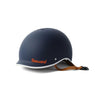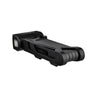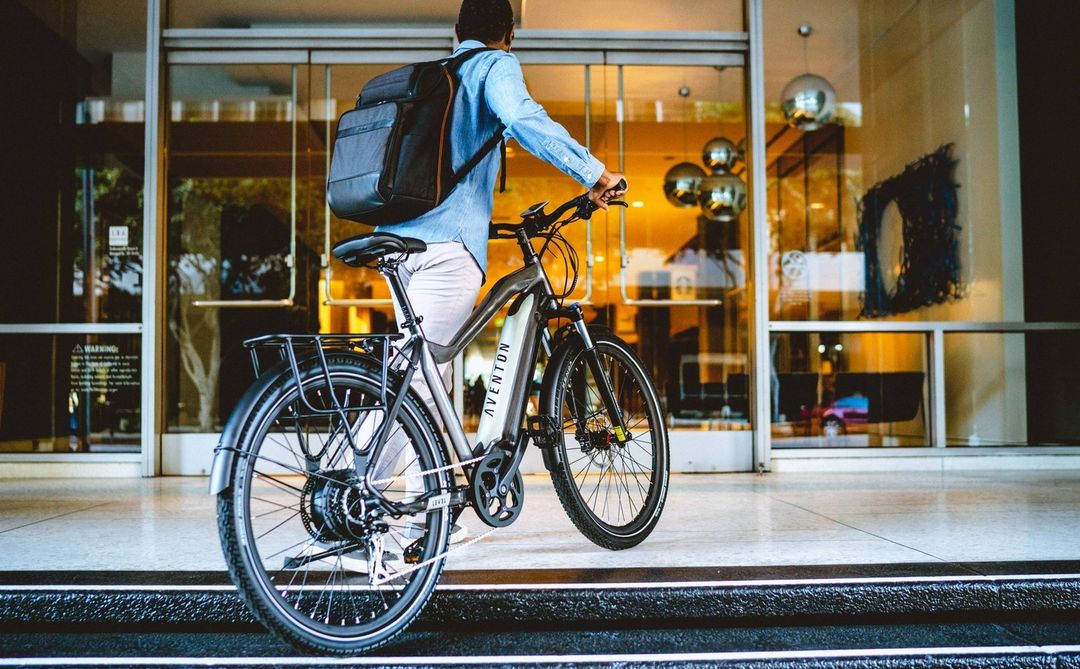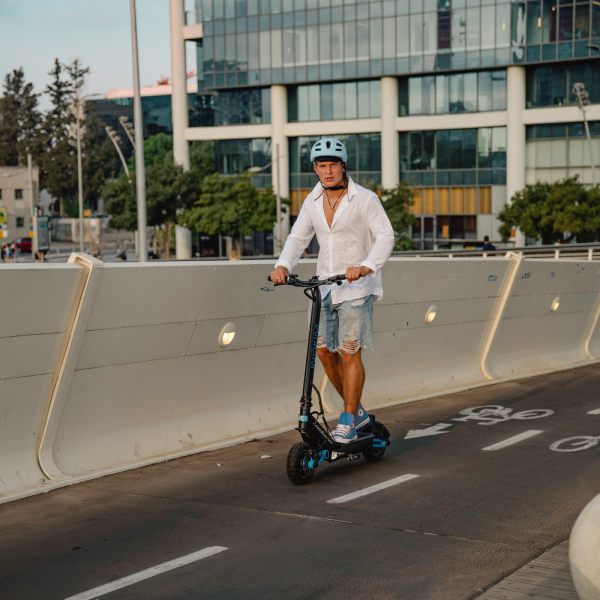Electric scooters and bikes have transformed the way we think about transportation. More people are opting for these e-rides over traditional cars, and are now experiencing the benefits: sustainability, practicality, and convenience.
Indeed, the future is here.
But if you’re new to the e-mobility world, it can be tricky to decide which mode of transportation is better for you. Is it electric bikes or electric scooters?
Let’s compare the two to find out what suits your needs.
Contents:
- What are Electric Bikes and Electric Scooters?
- Speed and Performance
- Battery and Range
- Weight and Portability
- Practicality and Function
- Costs of Maintenance
- Safety and Weight Capacity
- Comfort and Suspension
- Overall Verdict: Which One is For You?
- Quick Comparison
What are Electric Bikes and Electric Scooters?
Electric bikes, or e-bikes, are basically bicycles equipped with an electric motor and a battery. Whether it's providing pedal assistance or a throttle-only boost, an electric bike allows riders to go faster and further with less effort.
Appearance-wise, e-bikes are very similar to traditional bikes. There are also different types of e-bikes that can tackle different activities such as commuting, transporting cargo, or off-road riding.
On the other hand, electric scooters, or e-scooters, share many traits with electric bikes. They have two wheels. They have an electric motor, batteries, and brakes. From face value, the main distinctions between scooters and bikes are the lack of pedals on the former and the riding position (standing vs. seated).
Both e-bikes and e-scooters have gained significant popularity in recent years, as both provide a suitable alternative to fuel-powered vehicles. However, they also have key differences that you should consider when deciding which one to get.
Here are key factors to keep in mind:
Speed and Performance
The gap between e-scooter and e-bike performance is closing. While electric bikes are known to cover more mileage on a single charge, there is not a lot of variation when it comes to top speed, which typically ranges between 25 kph and 70 kph.
It’s important to note that a lot of e-scooters and e-bikes have the option to unlock higher top speeds. For example, the Segway MAX G2 Global Edition, can be unlocked to reach 35 kph (in contrast to the Standard Edition, which is limited to only 25 kph). Similarly, the Aventon Level.2 is a Class 2 e-bike out of the box and limited to 32 kph, but using the app, it can be unlocked to a Class 3 e-bike so it can reach higher speeds of up to 45 kph.
(Learn more about e-bike classes here.)
It’s worth remembering, however, that regardless of what speed your e-bike or e-scooter is capable of doing, there are speed limit laws in place that you need to adhere to.
In terms of range, while e-scooters' advertised range are increasingly similar to e-bikes, generally e-bikes are more capable of actually reaching these. An e-scooter with an advertised range of 50 km, for example, may only get to 35-40 km in a real-life scenario. An e-bike advertised at 50 km, however, is likely to reach its maximum range, if not very close to it.
Overall, there is not a lot of difference when it comes to performance. Since both range and speed are comparable, you'll need to consider more aspects to choose between electric scooters and electric bikes.
Battery and Range
Electric bikes generally come with larger batteries, which gives most riders up to 6 hours of continuous riding. Of course, this would vary depending on terrain, user weight, and speed.
Compared to e-bikes, e-scooter batteries often have lower voltages. They are also more compact and lighter in weight, which contributes to the portability of electric scooters.
However, there are also e-scooters like the Anyhill UM2 with swappable batteries. With this feature, you can quickly change your drained battery for a fully-charged spare and effectively double your range.
Although both e-bike and e-scooter batteries use similar charging methods, the bigger e-bike batteries typically require a longer charging time. (Remember to take this into consideration when planning a long road trip.)
So, when it comes to battery, it's not really a case of which-is-better. Instead, you should select based on your priorities. Do you want to have heavier batteries, which provide a longer range but take more time to charge, or do you require a lightweight and portable ride?
Weight and Portability
It goes without saying that e-scooters are more portable than e-bikes. Electric bikes have larger frames, and they usually weigh more because of bigger components. Considering its bulk, it is not practical to buy an electric bike if you need to carry it around or if you live in a building with lots of stairs and no lifts.
If you are looking for a portable mode of transportation, an e-scooter is probably your best bet. Aside from its light weight, electric scooters are foldable and easy to transport and store, even in minimal spaces. A good model to consider is the Pure Air³, which only weighs 15.9 kg.
On the other hand, electric bikes are not yet totally out of the picture. The Aventon Soltera.2, for example, only weighs 20 kg, while the Aventon Sinch.2, while not lightweight, folds for efficient storage.
Practicality and Function
E-bikes are practical modes of transportation and can be used for various functions, like commuting and carrying or delivering heavier cargo. Specifically, cargo bikes, like the Aventon Abound and the Fiido Titan, are an excellent choice for this purpose.
On the other hand, while an electric scooter is great for commuting and running errands, it is not the best option for hauling heavier items.
Similarly, while there are plenty of powerful electric scooters in our collection, they are not equipped to handle highly technical trails and loose terrain. In these cases, your best options would include electric mountain bikes like the Aventon Ramblas or fat-tyre e-bikes like the Aventon Aventure.2.
That said, if you need a convenient and eco-friendly way to get around town and occasionally carry light cargo, an electric scooter remains a good option.
Now, it's also good to note that even without the motor and battery, an electric bike is still usable as a bicycle—just without the electric assistance. On the other hand, it's almost impossible to ride an electric scooter without these components.
Costs of Maintenance

Electric bikes usually cost more than electric scooters because of their components, bigger batteries, and more robust motors. Although there are some high-end electric scooters that are priced similarly to e-bikes, you are more likely to find an e-scooter at a fraction of the cost of an e-bike.
In terms of maintenance, the cost varies depending on what you need done. Changing an e-bike tyre, for example, is very cheap and any bike shop can do it. Changing an e-scooter tyre, on the other hand, is harder, and in some cases can take hours to accomplish. This pushes up the price.
Availability of parts for bikes is generally better so if you need replacement parts, e-bikes are cheaper. However, they have more mechanical components than e-scooters such as cranks, gears, and chains, so they will need to be serviced more often and will suffer from more wear & tear than e-scooters.
If you look after your e-scooter, it will usually be cheaper to maintain than an e-bike.
Safety and Weight Capacity
In general, as long as you buy a top brand—from a reputable retailer—you can rest assured your electric scooter or electric bike is safe.
They should be equipped with lighting systems, safe batteries (we have a wide selection of UL-certified bikes and UL-certified scooters), strong braking systems, and a durable build overall.
Nonetheless, no matter how safe your scooter or bike is, you need to be extra careful, riding defensively and always with a good, well-fitting helmet.
It is also important to consider rider weight capacity. While e-bikes are normally able to support 130-180 kilograms, most e-scooters accommodate around 120 kilograms (with very few models exceeding this limit and reaching the 130-kg mark).
We can't emphasise this enough, but it is crucial to respect these weight limits to keep your ride in safe and optimal riding conditions.
In fact, we recommend choosing a model with a weight capacity that exceeds your body weight by at least 10%. For instance, if you weigh 100 kg, opt for a scooter or bike that can support at least 110 kg. This extra buffer will accommodate any additional cargo you might carry, like groceries or a backpack.
Comfort and Suspension
It’s very important to consider your own comfort level when it comes to buying an e-scooter or e-bike. Some people will find sitting on an e-bike for extended periods uncomfortable, while for others, the idea of balancing on an e-scooter is daunting.
Also, think about your preference: do you prefer sitting down or standing up on your commute? If possible, test both options to determine which one works best for you.
That said, if you are keen on getting an e-scooter but prefer to be seated, check out our seated e-scooters, like the Fiido Q2.
We also have to talk about suspension. Electric bikes are more likely to include suspension systems that allow their users to easily navigate bumpy and rough terrain. In the past, suspension was rare in electric scooters, but now, they are no longer limited to off-road rides like the Inokim OXO. Even commuter e-scooters like the Segway MAX G2 are equipped with efficient suspension systems.
Whether it’s an e-bike or an e-scooter, a good suspension system will give you a smooth and comfortable ride.
Another key thing to consider is how far you’ll travel in one go. If you need to commute 20 km from your home to work, for example, you will find e-scooters get increasingly uncomfortable as you reach your destination. Your back & knees will start to get sore because you’ve been standing for about 30-45 minutes straight. Once you reach your destination, you then have to make the same journey back at the end of the day.
An e-bike is perfect for this scenario as you can sit down for the whole journey. This is much less taxing on your body and your legs.
Overall Verdict
If you live in a rural or suburban area with limited public transportation options, the e-bike will allow you to cover more range and travel longer commutes.
While e-bikes are generally more expensive (upfront and in maintenance costs), they can be used for other purposes like delivering cargo and carrying groceries. They are also generally more comfortable, especially during long-distance rides.
However, if you live in a city with a lot of traffic congestion, the e-scooter is the better option for you.
Despite its smaller motor, the e-scooter’s manoeuvrability will allow you to go around cars. It is portable enough to be carried around in elevators and on public transport, and owning one will also incur lower maintenance costs.
Whether you choose an electric bike or an electric scooter, these new modes of transportation offer numerous advantages like minimal petrol and insurance costs, lower maintenance expenses, and the ability to help reduce traffic congestion.
Plus, they provide an opportunity to exercise and enjoy the outdoors while leaving a smaller carbon footprint!
Need more information about electric scooters and electric bikes? Our team is happy to help! Call us now at 1300 054 257 and speak with our product specialists.
Quick Comparison Chart: E-Bikes vs. E-Scooters
|
Metric |
Electric Bikes |
Electric Scooters |
|
Motor |
250W - 750W |
300W - 500W |
|
Battery |
360 Wh - 720Wh |
220 Wh - 561 Wh |
|
Speed |
25 kph - 45 kph |
25 kph - 70 kph |
|
Range |
64 km - 128 km |
25 km - 65 km |
|
Weight |
20 kg - 35 kg |
15 kg - 24 kg |
|
Capacity |
136 kg - 181 kg |
90 kg - 150 kg |
Disclaimer: This chart covers entry-level to mid-range e-bike and e-scooter models and excludes top-of-the-line models.









